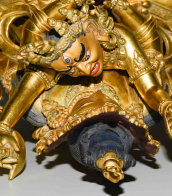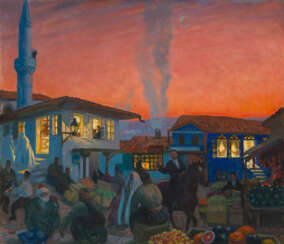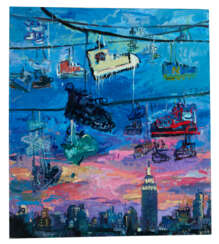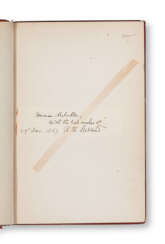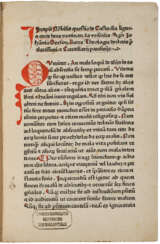tod's

Mathew Weir is a British artist who belongs to the group of Young British Artists who defined the art culture of the 1990s. In his work, Weir combines images of ceramic figurines with his archive of landscapes, creating complex narratives with an exquisite yet melancholic aura.


Tschang-Yeul Kim is a South Korean abstraction artist, one of the most famous figures in the history of modern Korean art.
He lived most of his life in Paris, France, where he developed his own unique style of painting. Tschang-Yeul Kim painted paintings with a variety of water droplets that appear to protrude from the canvases as if the canvas were "crying," but are in fact optical illusions.


Todd Gray works in photography, performance and sculpture as a contemporary artist who lives and works in Los Angeles, California and Akwidaa, Ghana.
Writing in the catalogue for the exhibition Black is, Black Ain't at the Renaissance Society, Chicago, Amy M. Mooney writes "critics have noted that Gray's work is "fluent in cultural iconography, driven by introspection, and steeped in issues of corporate politics and racial identity" and that his self-portraits thwart a traditional read of the exterior likeness". Gray describes himself as an artist and activist who primarily focuses on issues of race, class, gender, and colonialism, and uses these lenses to challenge binaries in the past and present. In general, his work aims to challenge the viewer both by what he is including and what he is leaving out.


Todd Gray works in photography, performance and sculpture as a contemporary artist who lives and works in Los Angeles, California and Akwidaa, Ghana.
Writing in the catalogue for the exhibition Black is, Black Ain't at the Renaissance Society, Chicago, Amy M. Mooney writes "critics have noted that Gray's work is "fluent in cultural iconography, driven by introspection, and steeped in issues of corporate politics and racial identity" and that his self-portraits thwart a traditional read of the exterior likeness". Gray describes himself as an artist and activist who primarily focuses on issues of race, class, gender, and colonialism, and uses these lenses to challenge binaries in the past and present. In general, his work aims to challenge the viewer both by what he is including and what he is leaving out.


Todd Hido is an American photographer and artist. He is best known for his moody and atmospheric photographs of suburban landscapes and homes, which often convey a sense of loneliness and isolation.
Hido's photographic style is characterized by his use of muted colors, soft lighting, and blurred images. He often photographs interiors and exteriors of homes at night, creating a dreamlike and eerie mood. His work is also known for its cinematic quality, and many of his images evoke the mood of film noir.
Hido's work has been exhibited in galleries and museums around the world, and his photographs have been published in numerous books and magazines. He has received many awards for his work, including a fellowship from the National Endowment for the Arts.
Hido's legacy as an artist and photographer continues to influence new generations of photographers and artists. His moody and evocative style has had a significant impact on the field of contemporary photography and has helped to redefine the way that we think about suburban landscapes and the concept of home.


Todd Hido is an American photographer and artist. He is best known for his moody and atmospheric photographs of suburban landscapes and homes, which often convey a sense of loneliness and isolation.
Hido's photographic style is characterized by his use of muted colors, soft lighting, and blurred images. He often photographs interiors and exteriors of homes at night, creating a dreamlike and eerie mood. His work is also known for its cinematic quality, and many of his images evoke the mood of film noir.
Hido's work has been exhibited in galleries and museums around the world, and his photographs have been published in numerous books and magazines. He has received many awards for his work, including a fellowship from the National Endowment for the Arts.
Hido's legacy as an artist and photographer continues to influence new generations of photographers and artists. His moody and evocative style has had a significant impact on the field of contemporary photography and has helped to redefine the way that we think about suburban landscapes and the concept of home.

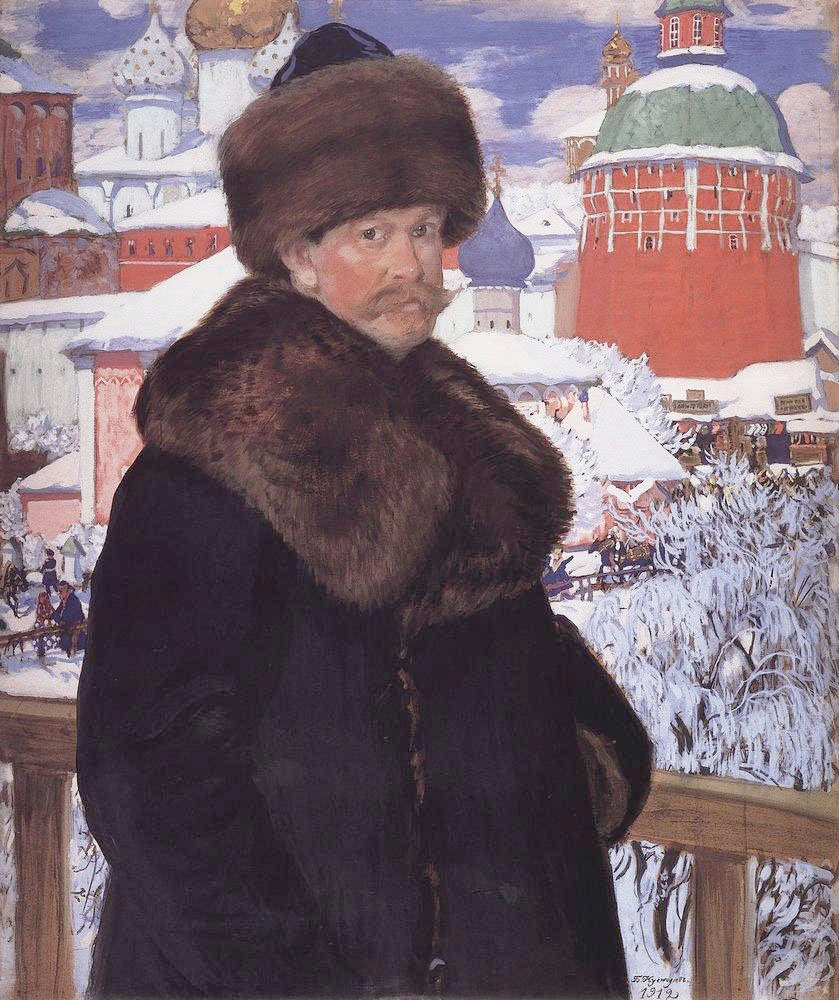
Boris Mikhailovich Kustodiev (Russian: Бори́с Миха́йлович Кусто́диев) was a distinguished Russian artist and painter, celebrated for his vivid portrayal of the Russian culture and way of life. Born in Astrakhan in 1878, Kustodiev's artistic journey began at a young age, leading him to study under the renowned Ilya Repin at the Imperial Academy of Arts. His works, characterized by their rich color palette and intricate detail, capture the essence of Russia's social and cultural fabric during the early 20th century.
Kustodiev's art is notable for its depiction of Russian peasantry, landscapes, and bourgeois celebrations, embodying the spirit and vibrancy of Russian folklore and traditions. His paintings such as "The Merchant's Wife" and "Maslenitsa" are celebrated for their lush visual storytelling and are housed in prestigious museums, including the State Russian Museum in St. Petersburg. These works reflect Kustodiev's fascination with the Russian merchant class and traditional festive gatherings, showcasing his skill in blending realism with a folkloric charm.
Beyond painting, Kustodiev's contributions to theatre and book illustration further demonstrate his versatile talent and deep connection to Russian cultural heritage. Despite facing personal challenges, including a debilitating illness that confined him to a wheelchair, Kustodiev's prolific output continued unabated, leaving behind a legacy that continues to enchant and inspire. His ability to capture the beauty and complexity of Russian life has made his work invaluable to collectors and experts in art and antiques alike.
For those intrigued by the rich tapestry of Russian culture and history as depicted through the lens of one of its most celebrated artists, we invite you to sign up for updates. Stay informed on new product sales and auction events related to the illustrious works of Boris Mikhailovich Kustodiev. This subscription is your gateway to the vibrant world of Russian art, offering exclusive insights and opportunities for collectors and enthusiasts.


Boris Mikhailovich Kustodiev (Russian: Бори́с Миха́йлович Кусто́диев) was a distinguished Russian artist and painter, celebrated for his vivid portrayal of the Russian culture and way of life. Born in Astrakhan in 1878, Kustodiev's artistic journey began at a young age, leading him to study under the renowned Ilya Repin at the Imperial Academy of Arts. His works, characterized by their rich color palette and intricate detail, capture the essence of Russia's social and cultural fabric during the early 20th century.
Kustodiev's art is notable for its depiction of Russian peasantry, landscapes, and bourgeois celebrations, embodying the spirit and vibrancy of Russian folklore and traditions. His paintings such as "The Merchant's Wife" and "Maslenitsa" are celebrated for their lush visual storytelling and are housed in prestigious museums, including the State Russian Museum in St. Petersburg. These works reflect Kustodiev's fascination with the Russian merchant class and traditional festive gatherings, showcasing his skill in blending realism with a folkloric charm.
Beyond painting, Kustodiev's contributions to theatre and book illustration further demonstrate his versatile talent and deep connection to Russian cultural heritage. Despite facing personal challenges, including a debilitating illness that confined him to a wheelchair, Kustodiev's prolific output continued unabated, leaving behind a legacy that continues to enchant and inspire. His ability to capture the beauty and complexity of Russian life has made his work invaluable to collectors and experts in art and antiques alike.
For those intrigued by the rich tapestry of Russian culture and history as depicted through the lens of one of its most celebrated artists, we invite you to sign up for updates. Stay informed on new product sales and auction events related to the illustrious works of Boris Mikhailovich Kustodiev. This subscription is your gateway to the vibrant world of Russian art, offering exclusive insights and opportunities for collectors and enthusiasts.


Harriet Beecher Stowe, full name Harriet Elisabeth Beecher Stowe, was an American writer and poet, an activist for the eradication of slavery in the country.
Beecher Stowe is the author of the world-famous novel Uncle Tom's Cabin. Published first in a newspaper and first published as a book in 1852, it aroused widespread anger in the country and galvanized the fight against slavery in the southern United States. This novel was later reprinted many times in all languages of the world and has been screened more than once.
In her youth, Beecher Stowe received an academic education, wrote poetry, notes and essays on social topics. In addition to "The Shack", she wrote several other novels and was engaged in teaching.


Samuel Kettell was an American writer and editor.
He was an accomplished self-taught linguist and mastered fourteen languages. His humorous publications in the Boston Courier under pseudonyms attracted attention and in 1848 he became the permanent editor-in-chief of this newspaper.
Kettell's major work, however, was Samuel Griswold Goodrich's Samples of American Poetry with Critical and Biographical Notes, which was published in 1829. This comprehensive catalog is the first bibliography of early American poetry, and includes the works of nearly 200 poets before 1829.Kettell provided biographical sketches of each writer, from Cotton Mather to Francis Scott Key, Washington Irving, and Sarah Josepha Hale.
In addition, Kettell published A Personal Narrative of Columbus's First Voyage (1827) and Accounts of the Spanish Inquisition (1828).

.jpg)
Jean Charlier de Gerson was a French academic, theologian, preacher and politician of the 14th and 15th centuries.
Jean Charlier de Gerson was Chancellor of the University of Paris from 1395 until 1415, and as such played a major role in the political troubles between the Duke of Orleans and the Duke of Burgundy, subsequently known as the Armagnacs and Burgundians, as well as in the crisis arising from the Great Western Schism.


Phillis Wheatley or Phillis Wheatley Peters was an American poet born in Africa.
A native of West Africa, Phillis Wheatley was kidnapped as a young child and sold as a slave in 1761 to John and Susanna Wheatley in Boston. They chose the name Phyllis for her in honor of the ship on which the girl traveled the Middle Passage. The Wheatley family quickly recognized her intellectual abilities and encouraged her study of the classics. Phyllis began writing poems and verses, and some were even published when she was only 14 years old.
However, the 18th-century public had great difficulty accepting a black slave girl as a writer. In May 1773, Wheatley traveled to London with her master's son. There her first book, Poems on Miscellaneous Subjects, Religious and Moral, was published. Wheatley's literary talent and personal qualities contributed to her great social success in London. In the fall of 1773, Phyllis returned to the United States and Wheatley was granted her freedom. She married, but lived only 31 years.
Wheatley's most famous poem today, "On Being Brought from Africa to America" (1768), directly addresses the theme of slavery.



